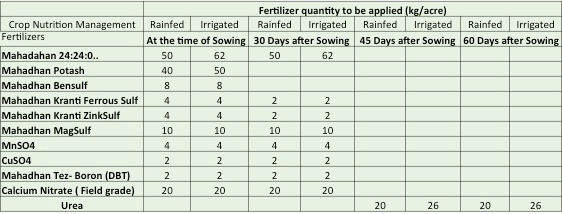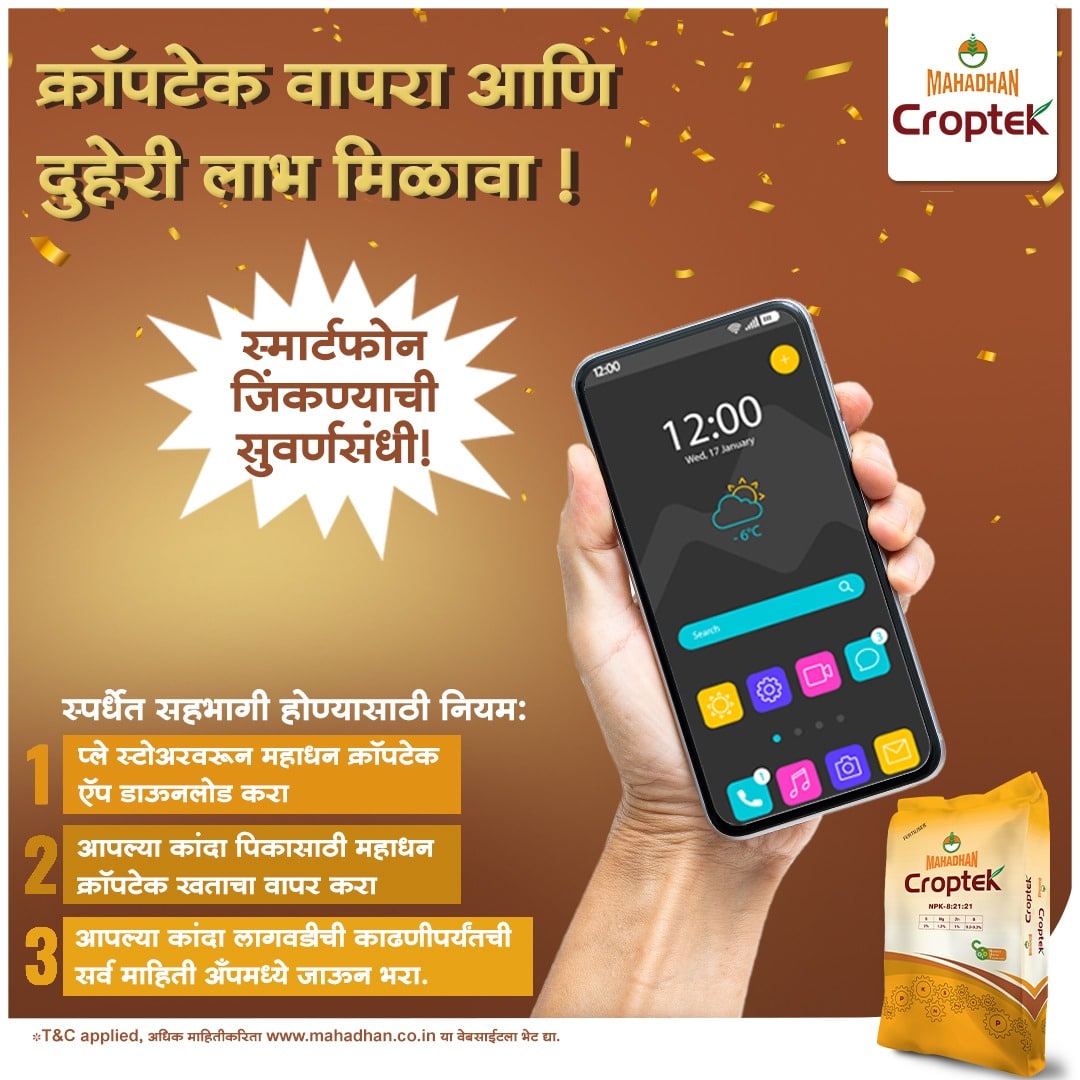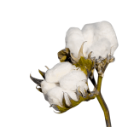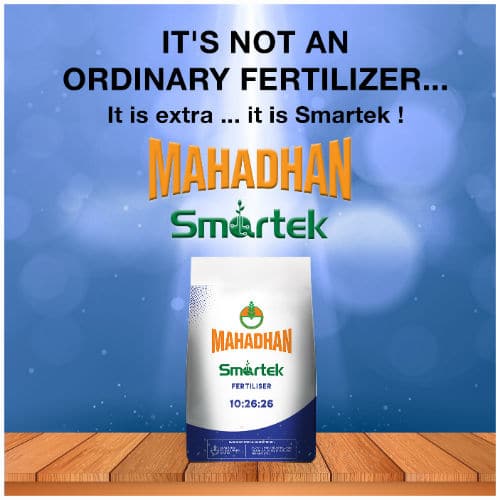
Cotton Farming Tips
Cotton is a warm-season crop. It grows well in areas with rainfall of 850–1,100 mm. In India, it is mostly grown as a rain-fed crop. However, with irrigation facilities and drip system, cotton yields more profits to the farmers.
Well drained black cotton soils are best suited for this crop.
Fine tilth of soil is obtained by one ploughing followed by 2–3 harrowings.
Sowing at 1 seed/hil is recommended. In case of gaps, the filling should be done within 10–12 days after sowing. Optimum sowing depends on the type of hybrid/variety grown by the farmers.
Farmers are advised to do regular inter-cultural practices as per their choice and convenience. Inter-cultural operations help keep soil well aerated and weeds under check.
Cotton crop should be manured with FYM or compost at least once in 3 years (4–6 t/ac). Irrigated cotton needs more nutrition than a rain-fed cotton crop. Nitrogen fertiliser should be applied in splits under both rain-fed and irrigated conditions.
Nitrogen, Phosphorus, Potassium, Calcium, Magnesium, Sulphur, Iron, Manganese, Zinc, Copper, and Boron
| Nutrient | Mahadhan Product |
|---|---|
| Nitrogen | MahaPower (Mahadhan 24:24:00) |
| Phosphorus | MahaPower (Mahadhan 24:24:00) |
| Potassium | Mahdhan Potash |
| Calcium | Mahadhan Calcium Nitrate (Field Grade) |
| Magnesium | Mahdhan Magsulf |
| Sulphur | Mahadhan Bensulf |
| Iron | Mahadhan Kranti Ferrous Sulf (for soil application) Mahadhan Tez Fe (for drip application |
| Zinc | Mahadhan Kranti Zinksulf (for soil application) Mahadhan Tez Zn (for drip application) |
| Manganese | Mahadhan MnSO4 |
| Copper | Mahadhan CuSO4 |
| Boron | Mahadhan Tez Boron |
Fertiliser schedule recommended for cotton farmers without drip facility (Soil application) (Table 1)

Fertigation schedule recommended for farmers with drip irrigation facility (Table 2)


Foliar application recommended for all cotton farmers (Table 3)

Though cotton is mostly grown as a rain-fed crop, it is advised that wherever irrigation facilities are available, regular irrigation should be given at different stages of cultivation. Farmers should stop irrigating the crop as it approaches maturity and no irrigation should be given 150–160 days after sowing. Cotton is sensitive to water logging. Hence, care must be taken to drain the excess water during monsoon time.
Weeds
Cotton crop is infested with several weeds including grasses, broadleaf weeds, and sedges. Farmers should control the weeds either through manual weeding or by using herbicides.
Weed Management
On pre-emergence, application of any one of the following herbicides is recommended within 3 days of sowing:
- Pendimethalin 30% EC (1 l/ac)
- Pendimethalin 38.7% CS (700 ml/ac)
Any spraying of non-selective, post-emergent herbicides like glyphosate 36% SL (1 l/ac) or Pyrithiobac Sodium 10% EC (250 ml/ac) or Propaquizafop 10% EC (250 ml/ac) should be done only 60–70 days after the sowing stage, and that too with a sprayer, using a protective shield or a hood so that no spray falls on the crops.
With the advent of Bt cotton, the incidence of bollworms and other chewing pests is minimal. However, their incidence may be noticed in cotton fields in times of heavy incidence of pest infestation under pest-favorable conditions: They are American bollworm or Fruit Borer, Spotted bollworm, Pink bollworm, and Tobacco caterpillar.
Management Practices for control of borers, bollworms, and caterpillars
- Growing of less preferred crops like green gram, black gram, soybean, castor, sorghum etc., along with the cotton as intercrop or border crop.
- Removal and destruction of crop residues
- Application of Nuclear Polyhedrosis Virus (NPV)
- Spraying of insecticides like Quinalphos 25 EC @ 20 ml /10 lit of water or Carbaryl 50 wp @ 40 gms/10 lit of water or Spinosad 45 /sc @ 0.01 % or Beta-cyfluttrrin 2.5 EC @ 0.0025 % or Cypermethrin 10 EC @ 7.5ml/10lit of water or Cypermethrin 25 EC @ 3.0 ml/10 lit of water or Fenvalerate 20 EC @ 6 ml/10 lit of water or Decamethrin 2.8 EC @ 9ml/10lit of water or Fluvalinate 20 EC @ 4.5 ml / 10 lit of water
Incidence of sucking pests is observed more now-a-days in most of the cotton areas. The commonly occurring sucking pests are: Jassids, Aphids, Whiteflies, Thrips, Mites, and Mealy Bugs
Management measures for control of Sucking pests
- Aphids, jassids and thrips
Spraying of Methyl demeton 25 EC @ 8 ml /10 lit. of water or Acetamiprid 20 SP @ 100g/ac or Spinetorum 120 SC – 180ml/ac Or Spinosad – 75ml/ac or Acephate- 300g/ac or Imidacloprid- 150ml/ac or Fipronil 5% SC- 250ml/ac - For White fly
Spraying of Methyl demeton 25EC @ 40 ml /10 lit of water or Dimethoate 30 EC @ 33 ml/10lit of water or Trizophos 25 EC @ 10 ML /10 lit of water or Fenpropethrin 50 EC @ 10ml/10 lit of water or Acetamiprid @ 100g/ac or Difenthiuron @ 250g/ac or Pyriproxifen @ 400ml/ac
- Fusarium wilt
Management- Treat the acid-delinted seeds with Carboxin or Carbendazim at 4 g/kg.
- Remove and burn the infected plant debris in the soil after deep summer ploughing during June-July.
- Apply increased doses of potash with a balanced dose of nitrogenous and phosphate fertilizers.
- Apply heavy doses of farm yard manure or other organic manures at 100t/ha.
- Spot drench with 0.05 % Benomyl or 0.1 % Carbendazim.
- Alterneria leaf blight
Management- Remove and destroy the infected plant residues.
- Spray Mancozeb or Copper oxychloride at 2kg/ha at the intimation of the disease.
- Two to three sprays may be given at 15 days’ interval.
- Bacterial blight
Management- Treating the acid delinted seeds with Carboxin or Oxycarboxin at 2 g/kg or soak the seeds in 1000 ppm Streptomycin sulphate overnight.
- Removing and destroying the infected plant debris.
- Harvest frequently, at intervals of less than 7 days
- Harvest in the morning hours, up to ten or eleven only, when there is moisture in the leaves
- Pick kapas from well burst bolls only
- Remove only the kapas from the bolls and leave the bracts on the plants
- After kapas is picked, sort out good puffy ones and keep them separately
- Keep stained, discoloured and insect attacked kapas separately.
NOTE: Do not mix stained, discoloured and insect damaged kapas with good kapas, as they will spoil the good kapas and lower the market value of the entire produce.
















